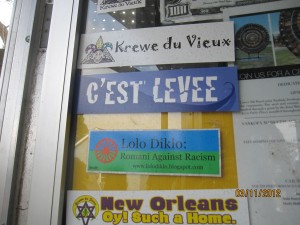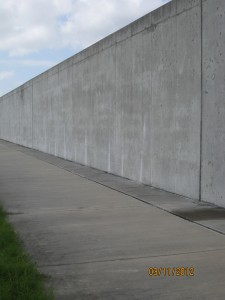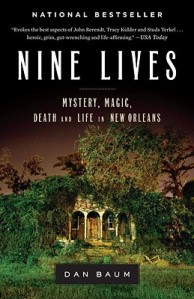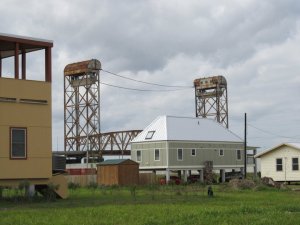The Lower Ninth Ward was among the last parts of Orleans Parish to be settled. And along with areas like Lakeview and Gentilly, it is among the last areas of the City to be repopulated in the wake of the flooding following Hurricane Katrina. In fact with a population about 25% of its 2000 population, it is dead last.
The first time I ever entered the Lower Ninth was in March 2006, just months after the flooding caused by the breech of the Industrial Canal. It was the first time anyone, including residents, was allowed to reenter this devastated neighborhood. I had come down for the first time to help with the cleanup, but I was totally unprepared for what I was to see. Nothing that I had seen on television in the wake of the flood could reflect the total, widespread destruction that I saw. Homes flattened and carried away by the rushing waters. Concrete slabs left behind; somber tombstones for homes, for communities, and for neighborhoods. Among the rubble were vehicles, household furnishings, children’s toys and medical equipment, the forgotten detritus of a once vibrant community.
It was so total that I felt something meaningful had to happen. A lion’s share of the City’s deaths were from this neighborhood The damage was so unspeakable. Truly something had to be done quickly and decisively to correct this travesty. But, the people of the Lower Ninth were left to wait…elsewhere.
I’ve gone back every year since then, accompanied by students from the University of New Hampshire. I always take them back to the intersection of Tennessee and Galvez, the spot where I first remember standing. I remember that day in 2007, once the students had wandered off to view the devastation. Nearly two years later. Nothing. Rubble had been cleared only to be replaced weeds. I sat on a stoop that once had been occupied by parents waiting for children to return from school. Hot tears of anger and sadness welled up. To this day, I don’t think I can separate the two.
A year later, in 2008, we encountered news crews, Brad Pitt, and former President Bill Clinton. Make It Right Nine was underway and over the last few years, change is noticeable, but it is not enough. It is a fine demonstration project highlighting sustainable building, but given all of the money that has poured into New Orleans, it is but a token. Thousands are forced to live elsewhere and, to this day, the Lower Ninth is but a shadow of its former self.
This was made clear about a year ago, when the New York Times Magazine chose to publish a large article on the Lower Ninth under the rather insensitive title of “Jungleland.” Written by Nathaniel Rich, it began by emphasizing the neglect and accompanying decay. If the writer had every witnessed the rural infestation of kudzu, the rapid overgrowth would not have proven such a spectacle. For a community so ignored, the incursion of wildlife, vegetation, dumping, and crime should not have surprised anyone. Neglect does that. And facile sensationalism is not the answer.
Thankfully, a community activist named Jenga Mwendo responded to the content and tone of Rich’s article. She takes him to task for not going after the root cause of institutional and governmental neglect; the many millions that have poured into New Orleans have not helped the most vulnerable. Former Mayor Ray Nagin, who allowed the bulldozing of the projects elsewhere, had little time for rebuilding the Lower Ninth. And while current Mayor Mitch Landrieu has been more responsive, his efforts have shaded towards removing blighted properties and paving streets (many of which were not paved before Katrina). Where was the support for former residents? Where is the housing or direct housing aid necessary to bring residents back.
As Mwendo point out, aid was non-existent in the aftermath of the flood. Post-Katrina aid benefited those whose property was worth more than those in the Lower Ninth. In addition, government at all levels moved slowly to provide the amenities necessary to support the community. They had to fight for schools, libraries and city services. And to this date, the nearest grocery store is miles away in Chalmette in St. Bernard Parish. She points out that reporters, like Rich, need to peel away institutional neglect, longstanding racism, and the toll of longstanding poverty to truly understand why the Lower Ninth is where it is at today. Much good is happening, from Brad Pitt’s homes, to urban gardening, to sustainable development, but more help is needed for the community to come back, even to half of what is was before.
This year, My class and I will be working in the Lower Ninth. And I’ve done this long enough to know that as satisfying as it is, it is but a drop in the bucket. However, I am happy that we can contribute what we can to the rebuilding and development of this too-long neglected community.

































